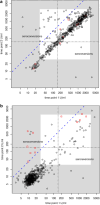Tick-borne encephalitis virus seroprevalence and infection incidence in Switzerland, 2020-2021
- PMID: 40069290
- PMCID: PMC11897124
- DOI: 10.1038/s41598-025-92560-1
Tick-borne encephalitis virus seroprevalence and infection incidence in Switzerland, 2020-2021
Abstract
Tick-borne encephalitis virus (TBEV) infection can manifest as disease of variable severity, ranging from subclinical infection to severe disease with neurological involvement and potentially fatal outcome. Although TBE is recognized as a major public health problem in Europe, the true burden of disease is potentially underestimated. Here, we investigated TBEV-specific antibody prevalence, infection incidence, and seroreversion and antibody decline rates in a prospective Swiss healthcare worker (HCW) cohort. We screened serum samples from 1444 HCWs between June and October 2020, and from a subset again between August and September 2021, using a TBEV envelope (E) protein IgG ELISA. Positive samples underwent further analysis with a TBEV non-structural protein 1 (NS1) IgG ELISA, and seroconversions in unvaccinated individuals were confirmed by seroneutralization testing. Questionnaire data were used to determine vaccination status and risk factors. TBEV E protein-specific IgG prevalence was 72.1% (95% CI 68.2-75.7%) in TBEV-vaccinated and 6% (95% CI 4.4-7.8%) in unvaccinated individuals. The estimated annual incidence of infection was 735/100,000. Age was the only factor significantly associated with seroprevalence. The seroreversion rate in unvaccinated individuals was 30.3% within one year, which is almost ten times higher than in vaccinated individuals (3.4%, annual decline rate 8.0%). NS1-specific IgG antibodies were six times more common in vaccinated than unvaccinated HCWs. In conclusion, undetected TBEV infections are common, and infection incidence is much higher than reported clinical cases. Individuals with abortive infections have high antibody decline and seroreversion rates. Whether lifelong protection is conferred and by which immune subsets remain unclear.
Keywords: Abortive; Asymptomatic; Incidence; Orthoflavivirus; Prevalence; TBE; TBEV; Tick-borne encephalitis.
© 2025. The Author(s).
Conflict of interest statement
Declarations. Competing interests: RA-G reports honoraria for lectures and/or research grants from Pfizer and Bavarian Nordic, which do, however, not relate to the present work. RL reports honoraria for presentations and discussions on the impact and prevention of different tick-borne diseases and the epidemiology of Lyme disease, which do also not relate to the present work. The other authors report no conflicting interests. Ethical approval: The study was approved by the ethics committee of Eastern Switzerland (#2020–00502). All study data were pseudonymized and REDCap was used for data collection. REDCap is a secure and established web application for clinical studies, compliant with the International Council on Harmonization of Good Clinical Practice (ICH-GCP). Consent for publication: Not applicable.
Figures




References
-
- Ruzek, D. et al. Tick-borne encephalitis in Europe and Russia: Review of pathogenesis, clinical features, therapy, and vaccines. Antiviral Res.164, 23–51 (2019). - PubMed
-
- BAG. Zahlen zu Infektionskrankheiten Zeckenenzephalitis FSME: Swiss Federal Office of Public Health; [Available from: https://www.bag.admin.ch/bag/de/home/zahlen-und-statistiken/zahlen-zu-in....
-
- Lunácková, J., Chmelík, V., Sípová, I., Zampachová, E. & Becvárová, J. Epidemiologic monitoring of tick-borne encephalitis in Rimov in Southern Bohemia. Epidemiol. Mikrobiol. Imunol.52(2), 51–58 (2003). - PubMed
MeSH terms
Substances
Grants and funding
LinkOut - more resources
Full Text Sources
Research Materials

